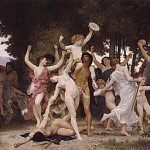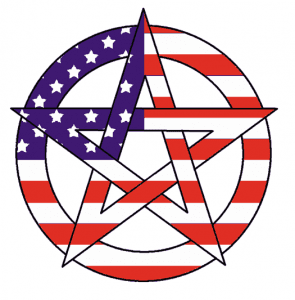 America has always been a cultural hotbed for magick and the occult. A lot of people love to pretend that America is a strictly “Christian Nation” with no room for the supernatural but such proclamations are patently untrue. America has a long and distinguished occult history. In honor of the Fourth of July I present this little look at a few of America’s most popular magickal innovations (and indeed this is a short look, not a graduate level study).
America has always been a cultural hotbed for magick and the occult. A lot of people love to pretend that America is a strictly “Christian Nation” with no room for the supernatural but such proclamations are patently untrue. America has a long and distinguished occult history. In honor of the Fourth of July I present this little look at a few of America’s most popular magickal innovations (and indeed this is a short look, not a graduate level study).
O beautiful for magicks wide . . . For Feminists so brave . . . . For Conjure spells so well applied . . . . Seances beyond the grave! . . . . . America! America! Magick shared on thee . . . . And crown thy spells with St. John’s Root . . . . . From sea to shining sea
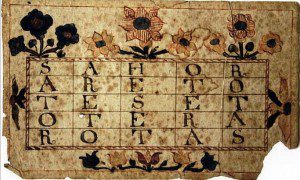 Folk Magick Has Always Been More Popular Than Church America is home to many myths. There’s George Washington chopping down the cherry tree to the Supreme Court being fair, rational, and impartial, but the biggest myth of all might be just how religious America has always been. During America’s Colonial Period only fifteen percent of white Americans regularly attended church services. In the first decades of her existence only one in ten Americans went to church. (1) Those are some very small numbers, and fly directly in the face of what so many of us were taught in school.
Folk Magick Has Always Been More Popular Than Church America is home to many myths. There’s George Washington chopping down the cherry tree to the Supreme Court being fair, rational, and impartial, but the biggest myth of all might be just how religious America has always been. During America’s Colonial Period only fifteen percent of white Americans regularly attended church services. In the first decades of her existence only one in ten Americans went to church. (1) Those are some very small numbers, and fly directly in the face of what so many of us were taught in school.
If all of those Americans weren’t going to church, what exactly where they doing? Well some of them were working of course (and this being the early days of the United States, some of those “working” were doing so involuntarily), others were drinking cider, making moonshine, and practicing folk magick. The dirty little secret of early America was that it was literally teeming with magickal activity. Some of it could be found in the more esoteric practices of the Freemasons, but for many people spells and charms were a part of everyday life. People believed in astrology too, and bought occult books by the truckload. After the Bible (and let’s be honest, how many people really read the thing cover to cover? And you don’t have to leave a note in the comments section letting us know you have) the second best selling book of the Nineteenth (and most likely early Twentieth) Century was a book full of Pennsylvania Dutch Magick called The Long Lost Friend.
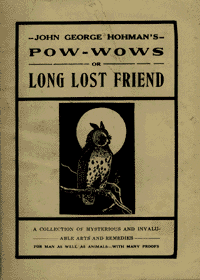 More people go to church regularly today than they did in the year 1790, but the numbers are not nearly as good as many would have you believe. Gallup estimates that only forty percent of Americans regularly go to church services, but those are probably generous numbers with the actual percentage at only 20%. By comparison twenty-five percent of Americans believe in astrology and seventy-five percent of Americans believe in at least one thing considered to be “paranormal.” More traditional folk magick has managed to remain a popular part of Americana too. Books like The Secret are still on best seller lists and what are herbal remedies and supplements if not a modern interpretation of centuries old cunning-craft?
More people go to church regularly today than they did in the year 1790, but the numbers are not nearly as good as many would have you believe. Gallup estimates that only forty percent of Americans regularly go to church services, but those are probably generous numbers with the actual percentage at only 20%. By comparison twenty-five percent of Americans believe in astrology and seventy-five percent of Americans believe in at least one thing considered to be “paranormal.” More traditional folk magick has managed to remain a popular part of Americana too. Books like The Secret are still on best seller lists and what are herbal remedies and supplements if not a modern interpretation of centuries old cunning-craft?
Spiritualism, Seances, & Talking to the Dead People have always attempted to communicate with the deceased. Ghost stories have been around for thousands of years, and even the Bible has one of Israel’s kings (Saul) seeking advice from the deceased prophet Samuel. Interest in ghosts and spirits is a part of human history, but modern Spiritualism only dates back to 1848 when Kate and Maggie Fox began conversing with a ghost named Mr. Splitfoot via a series of knocking sounds.
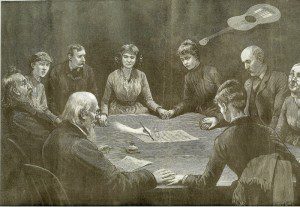 Modern Spiritualism was a whole new ball game when it crawled into the American psyche back in the 1850’s. It provided not just an opportunity to speak with a deceased loved one, it was also good for an evening’s entertainment. Floating megaphones, levitating tables, words magically appearing on slate boards . . . . . regardless of one’s belief in Spiritualism it’s impossible to deny just how cool a seance can be. America turned speaking with the dead into a national sensation (as many as 20% of Americans were Spiritualists in the Nineteenth Century) and exported the practice to Europe and other parts of the world as well.
Modern Spiritualism was a whole new ball game when it crawled into the American psyche back in the 1850’s. It provided not just an opportunity to speak with a deceased loved one, it was also good for an evening’s entertainment. Floating megaphones, levitating tables, words magically appearing on slate boards . . . . . regardless of one’s belief in Spiritualism it’s impossible to deny just how cool a seance can be. America turned speaking with the dead into a national sensation (as many as 20% of Americans were Spiritualists in the Nineteenth Century) and exported the practice to Europe and other parts of the world as well.
The heyday of Spiritualism lasted for about seventy years (1850 right up until World War One) but I’d argue that it’s never truly gone away. Our continued interest in “the other side” has simply allowed Spiritualism to adapt over the last one hundred years. In the 1950’s the seance in the parlor gave way to the seance in the living (or dorm) room courtesy of Parker Brother’s Ouija Board. In the modern age mediums have repackaged their gifts and are as popular as ever. John Edward is booked up through 2015, and for reasons I don’t quite understand the show Long Island Medium sometimes racks up over two million viewers for a new episode. Before she passed away Sylvia Browne used to set up shop in Las Vegas. Clearly America’s appetite for mediums and seances is still going strong.
As long as there have been Africans in the Americas there has been Conjure (also known as Hoodoo, the two are synonymous in most instances). While Conjure originates in Africa it’s become a truly American form of folk magick, taking inspiration from wherever and whoever. Over the last two hundred years Hoodoo has become a truly world practice, mixing elements of Native American magick and medicine with its original African ones, even incorporating European practices. The horseshoes, playing cards, and rabbit’s feet so common to many Conjure spells all come from Europe. The only rule in Hoodoo is that whatever you do has to work, it doesn’t really matter where it comes from.
Many people associate Conjure primarily with the American South, but it has never been limited by region. Hoodoo wasn’t just a cultural force in the rural South, it was popular in large Northern cities too, places like Chicago were a hotbed of Trick Doctors. In the big cities Hoodoo was so popular that Conjure Products were more popular than traditional medicine. It’s probably not much of an exaggeration to claim that the first “New Age Stores” were the old Hoodoo drug stores (along with Botanicas) which sold charms, books, oils, and other magical items.
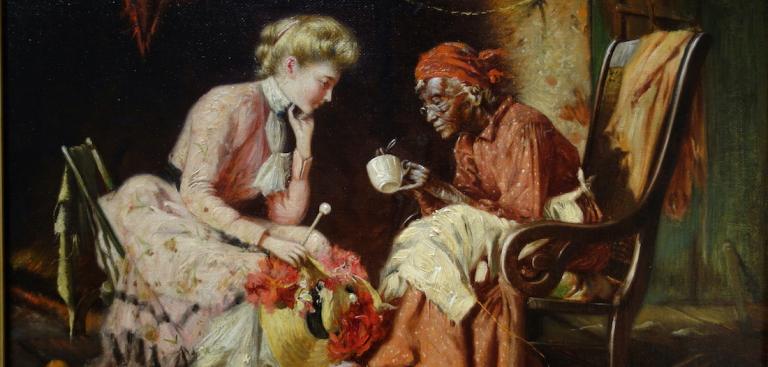
Hoodoo has thrived over the last few hundred years because it’s essentially just a magickal practice. There are African-Pagan spiritual elements in some of its spells and traditions, but for the most part Conjure is relatively compatible with many religions, including Christianity. During the Nineteenth Century it wasn’t uncommon for someone to be both a Christian Minister and a Root Doctor! References to Hoodoo can be found in the music of blues legends like Robert Johnson and Memphis Minnie, and over the last ten or so years there’s been increased interest in the practice. Conjure has been a part of the United States since its founding, and isn’t going anywhere anytime soon.
Neo-Paganism It’s hard to definitively pinpoint the first Modern Pagans, but I can say with certainty that the first long-lasting, continually practiced Modern Pagan Tradition was the Witchcraft of Gerald Gardner, though Gardner most likely didn’t think of himself as a “Pagan.” The words “Pagan” and “Neo-Pagan” as an umbrella term for Witches, witches, Druids, ceremonial magicians, Gia-lovers, and Earth Worshippers was popularized by Oberon Zell, one of the founders of the Church of All Worlds, and the publisher of The Green Egg. Going even further though, I’m of the opinion that much of what we think of as Neo-Paganism comes from the good old U.S. of A.
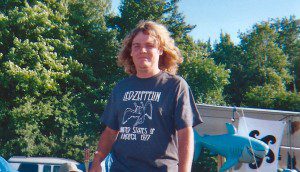 Gardner’s Witchcraft was exclusive, to practice it and be a part of it one had to be an initiate. Americans don’t like waiting for things like initiations, so people began to create, recreate, and flat out invent all sorts of new Pagan traditions and practices. Many of those practices were based on the writings of Gardner and other occultists. Groups such as Oberon Zell’s Church of All Worlds looked to the skies and the pages of science-fiction. People began Druid Orders on college campuses to fulfill religious requirements. That spirit of Pagan innovation has continued to this day.
Gardner’s Witchcraft was exclusive, to practice it and be a part of it one had to be an initiate. Americans don’t like waiting for things like initiations, so people began to create, recreate, and flat out invent all sorts of new Pagan traditions and practices. Many of those practices were based on the writings of Gardner and other occultists. Groups such as Oberon Zell’s Church of All Worlds looked to the skies and the pages of science-fiction. People began Druid Orders on college campuses to fulfill religious requirements. That spirit of Pagan innovation has continued to this day.
The sixties and seventies introduced new elements into Paganism too. Feminism, love of the Earth, equality for all . . . .those are values near and dear to me and many other Pagans, and have become a part of most Pagan gatherings. The hippy movement of the 1960’s touched Modern Paganism and made it less of a secret society and more of a larger community. Gardner’s Witchcraft is most certainly an English invention, but Neo-Paganism wouldn’t exist without the United States.
PHOTOS
1. Star Spangled Pentagram
2. SATOR Square
3. The Long Lost Friend
4. Seance, doesn’t that look cool?
5. “Reading the Tea Leaves” by Harry Roseland
6. Typical dirty Pagan hippy. Get that guy a haircut!
Notes & Such
I would never make a claim like only ten percent of Americans went to church in 1790 without a source. Luckily for me I’ve got D. Michael Quinn’s Early Mormonism and the Magic World View sitting right here on my lap. Those numbers show up on page 27. A lot of this piece came from lecture notes so I didn’t footnote everything, but I’m extremely indebted to Spiritual Merchants: Religion, Magic, and Commerce by Carolyn Morrow Long and Jeffrey E. Anderson’s Conjure in African-American Society for the bit on Hoodoo. I had originally hoped to use some of that material for a Magick in America workshop but while the lecture notes exist, it’s never made the presentation due to time concerns.
Do you like Raise the Horns? Even if you don’t would you be interested in humoring me? Like us on Facebook, and also like Patheos Pagan for more great articles just like this one. All you gotta do is click on those links.


